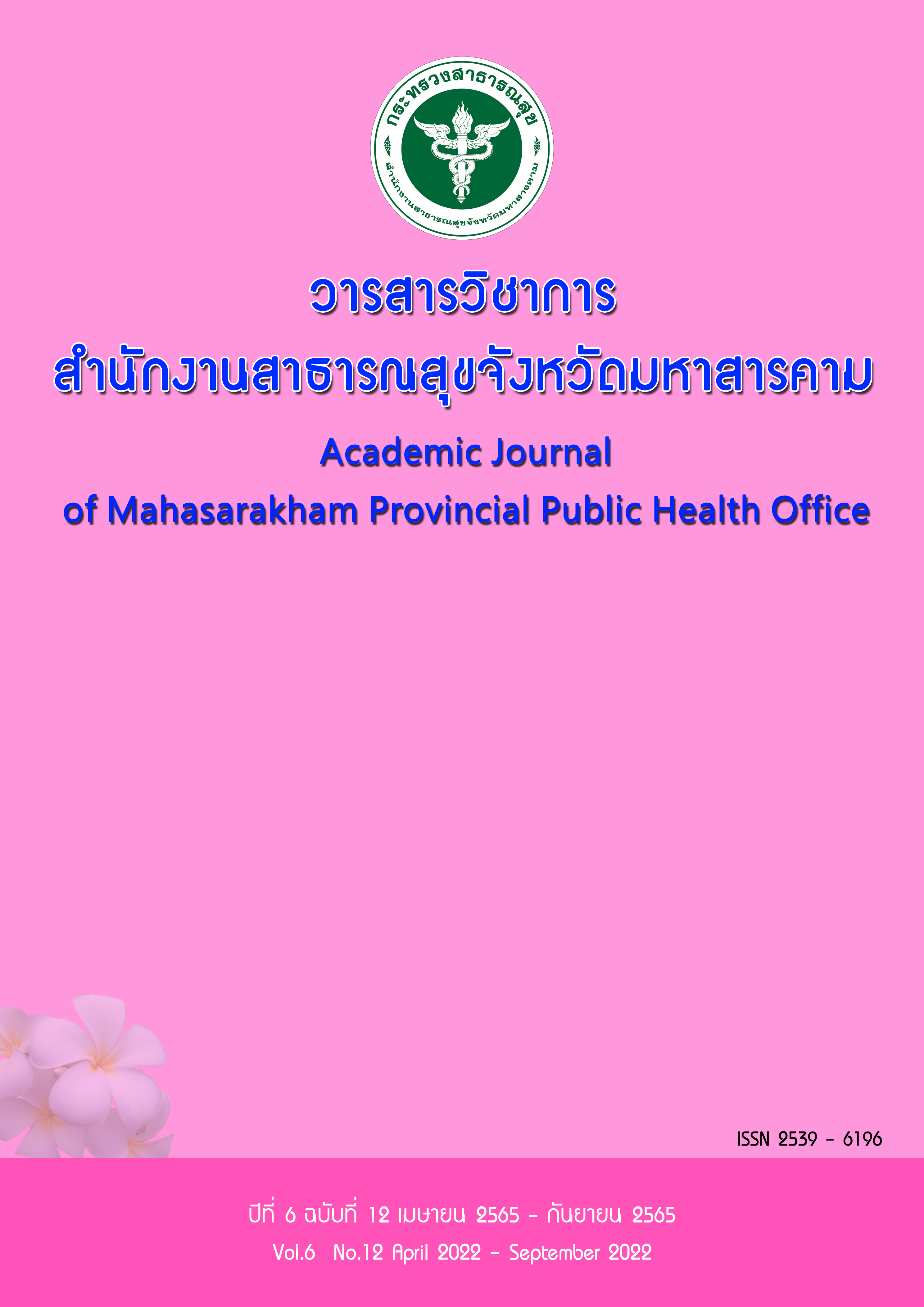Development of an Access to Health Service Model for Adolescents with Depressive Disorder
Abstract
Abstract
This action research aimed to develop a model of health service access for students with depressive disorders in a university in Mahasarakham Province. A total of 400 people participated in this study, including 180 students, 100 advisors, 90 student representatives, 20 members of the university universal health coverage committees, and ten staff of the community health center serving university students. The process of development consisted of three main steps: 1) Appreciation, 2) Influence, and 3) Control. This study was conducted from May 2018 to May 2019. Three sets of data were collected, including 1) the shortcomings of the health service system for university students with depression by observations and interviews, 2) assessment of health service access among university students with depression from the database of depression screening service recipients, and 3) knowledge of depression among university students using an adolescent depression knowledge questionnaire. Quantitative data were analyzed using frequency, and percentage while content analysis from lesson transcripts was used for qualitative data. Three components were found to contribute to the access patterns of university students with depression to health services: establishing a database system for students with depression and risk groups, developing a depression screening system, and establishing a network to monitor and prevent youth depression. Based on the developed model, 89.54% of students were screened for depression (2Q 9Q). Among these, 17.18% were classified as depressed, and 3.62% as having thoughts of self-harm. All of them were then counselled at the adolescent clinic of the community health center and referred to the hospital for treatments. There was no suicide. A monitoring system was then established for all risk groups. University advisors and volunteers, members of a network of friends-help-friends and brothers-help-sisters, were trained in depression screening and mental health education. The majority of trainees (88.45%) had a high level of depression knowledge, while the rest (11.55%) had a moderate level. A depression management network was also established, including university advisors and volunteers, for screening, assessing, monitoring, and seeking out risk groups at the university, and initially counseling before referring. The university universal health coverage committees, consisting of the government, civil society, private, and education sectors, provided guidelines, supported budgets, and continually monitored the results. The key success factor for this process was the involvement of all stakeholders and all relevant sectors integrated through the Inter-Professional Education (IPE) which enhanced the efficiency and sustainability of problem-solving.
Keywords : Access service, Depression, Adolescents, University students


